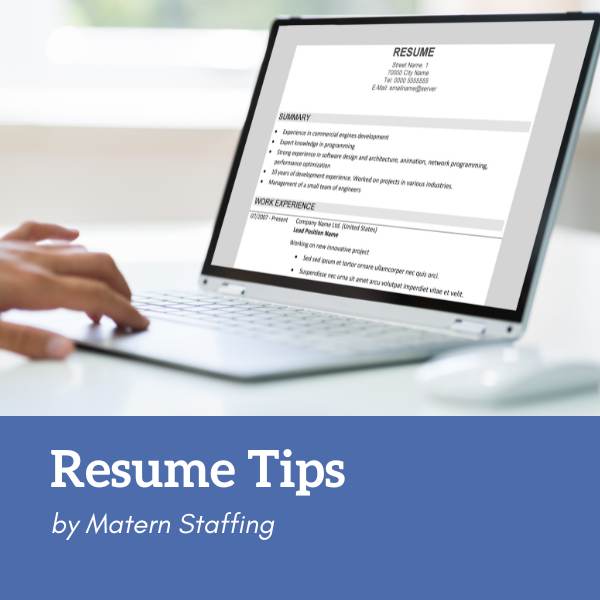Even if you’re not in the market for a new job, keeping your resume current ensures you don’t forget career milestones, newly acquired skills, important awards, or professional development courses/memberships. As you’re going through your resume, follow our 4 Resume Tips sure to grab the attention of the recruiter or hiring manager:
1. Stay Organized
Streamline your resume with a smooth, easy-to-read design with consistent spacing, style, font, and margins. Uniformly sprinkle bold or italicized style to highlight important sections, job titles, awards, and metrics. And, whatever you do, move away from Courier or Times New Roman font.
2. Make the Most of the Top Half
Immediately catch the attention of the recruiter or hiring manager, so include key pieces in the top half of your resume. This is the part of the resume where you need to promote your brand and what you bring to the job.
Make sure you have a professional email address (get rid of the old AOL email address) and remove the objective portion of your resume. Instead, include a short key description of yourself (e.g. Plant Manager) and 2-3 bullet points that summarize what you bring to your company, along with a brief supporting point (e.g. maintains smooth operations through employee motivation and excellent communication skills).
3. Note Your Key Skills & Achievements
Display your top skills near the top of your resume so as to best catch the hiring manager’s eye.
Highlight Your Achievements – this is where you can pat yourself on the back a little bit by showcasing what you’ve done in your career. If you received a promotion, why? Did you implement a new idea or process? Think back to past performance reviews to add some meat to this section. Weave your career highlights into your professional experience section to tell your work story.
4. Give Some Metrics
Just like all award-winning movies have strong supporting actors/actresses, make sure your resume includes key metrics supporting your success. How much did you reduce employee turnover? Did you save your department time or money by implementing a new idea or process? Back up key skills and achievements with money and percentage metrics.
It’s a Wrap
After you’ve finished updating your resume, review your LinkedIn account to make sure it reflects similar changes. Before making profile changes in LinkedIn be sure to turn off “Sharing Profile Edits” (in the Settings–>Privacy section) so your network isn’t bombarded with notifications. Turn the option back on right before making your final update so your network receives one notification.
Finally, don’t forget to contact us if you need resume or job search help!

